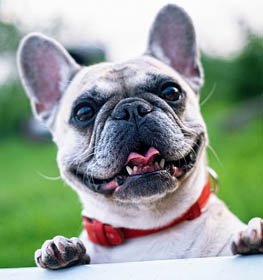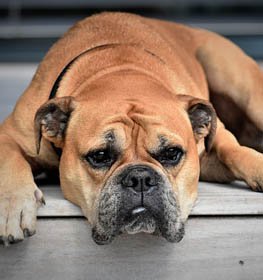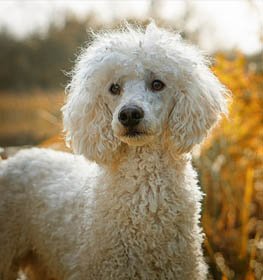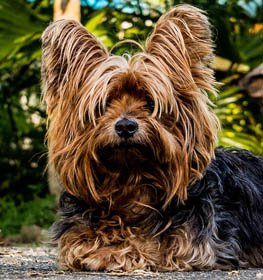Pomerániai törpespicc fajtaleírás, jellemzői, tulajdonságai
Az alábbi adatlapon a Pomerániai törpespicc kutyafajtával kapcsolatos komplex információkat találod, melyek alapján jobban megismerheted a fajtát. A kutya adatlapon a Pomerániai törpespicc fajtaleírását, jellemzőit, tulajdonságait gyűjtöttük össze Neked.
| Csoport | Társasági kutyák |
|---|---|
| Ranglistán betöltött helyezés | 22 |
| Vélemények | 9 |
| Felhasználói értékelések | |
|
Pomerániai törpespicc összehasonlítása más fajtákkal
Válassz legalább egy kutyafajtát az összehasonlításhoz. | |
 | |
| Származás | |
|
Egyéb nevek
Milyen más neveken hívják még a Pomerániai törpespicc fajtát? | Pomeranian, Deutsche SpitzePomeranian, Pom PomPomeranian, Spitz EnanoPomeranian, Spitz NainPomeranian, ZwergspitzPomeranian, ZwersPomeranian, Pom |
|---|---|
|
Fajta típusa
Keverék vagy fajtatiszta? | Fajtatiszta |
|
Méret
Mekkora méretű a Pomerániai törpespicc? Milyen nagyra nőhet meg? | Kistermetű |
|---|---|
|
Súly
Hány kg lehet a Pomerániai törpespicc fajta? | 1-3 kg |
|
Átlagsúly
Mennyi az átlagos súlya a kutyának? | 2 kg |
|
Magasság
Milyen magasra nőhet meg a Pomerániai törpespicc? | 18-30 cm |
|
Átlagmagasság
Milyen magasra nőhet meg átlagosan a Pomerániai törpespicc? | 24 cm |
|
Elérhetőség
Milyen könnyű hozzáférni/hozzájutni a kutyához? Milyen gyakorisággal fordul elő? |
|---|
|
Intelligencia
Mennyire okos a Pomerániai törpespicc fajta? | Nagyon okos: a Pomerániai törpespicc kiváló intelligenciájú kutyafajta. Sok trükköt és parancsot taníthatsz nekik. Az egyedüli határ a kreativitásod. Megértik és megjegyzik az új parancsokat 5-15 ismétlés után. |
|---|---|
|
Taníthatóság
Mennyire könnyű a Pomerániai törpespicc nevelése / taníthatósága? | Könnyű kiképezni: a Pomerániai törpespicc olyan kutyafajta, mely könnyedén tanítható. Nagyon gyorsan megtalálják a parancsok és a tevékenységek közötti összefüggéseket. |
|
Házőrző képesség
Mennyire jó házőrző típus a Pomerániai törpespicc? | Átlagos házőrző kutyafajta a Pomerániai törpespicc. Ha valami szokatlant érzékel, figyelmeztet, de a megfigyelést nem tekinti fő feladatának. |
|
Területvédelem
Mennyire védi területét a Pomerániai törpespicc? | Erősen védi területét a Pomerániai törpespicc. Ez a kutyafajta olyan, mint egy biztonsági őr. Veszély esetén lehet rá számítani. |
|
Temperamentum
Milyen természete van a Pomerániai törpespicc fajtának? Milyen a vérmérséklete? | AktívJátékosIntelligensBarátságosTanulékonyÉlénkTársaságkedvelőFigyelmesTrenírozhatóExtrovertált |
|---|---|
|
Érzékenység
Mennyire érzékeny lelkű kutya a Pomerániai törpespicc? | Kicsit érzékenyebbek, mint más kutyafajták. A szigorú fegyelmezés érzelmileg megérinti őket. Nem tolerálja a szabálytalan napi rutint, a zajos háztartást és a gyakori vendéglátogatásokat. Fogékonyak a gazdik érzelmeire és csodálatos lelki-társak tudnak lenni. |
|
Érzelmek kifejezése
Mennyire mutatja ki érzelmeit a kutyafajta? | Imádja az embereket: a Pomerániai törpespicc hűséges, lágyszívű, szelíd, szerető és gondoskodó kutya különösen a gazdái iránt. Élvezik a minőségi időt a gazdikkal, és nagyszerű terápiás kutyák válhatnak belőlük. Ez a fajta érzékeny a gazdi érzelmeire, mert szorosan kötődik hozzá. Ha boldog és kiegyensúlyozott vagy, akkor garantáltan ő is az. |
|
Szocialitás
Mennyire igényli az emberek társaságát? | Imád közösségben lenni a Pomerániai törpespicc. Igazi társas lény, mindig ott szeret lenni, ahol az események történnek. Nehezen viseli, ha egyedül hagyják. |
|
Kóborlási potenciál
Mennyire szeret elkóborolni a Pomerániai törpespicc? Mennyire szeret felfedezni és vándorolni? | Minimális: a Pomerániai törpespicc fajta nem a legnagyobb felfedező. Kevés esély van arra, hogy megszökjön otthonról. |
|
Ragadozó ösztön
Mennyire ragadozó típus? Veszélyes lehet más állatokra a Pomerániai törpespicc? | Átlag alatti: a Pomerániai törpespicc fajta viszonylag kevés impulzust érez arra, hogy kisállatokat (macskát vagy más apró állatot) elkapjon vagy üldözzön. Ragadozói ösztönének szintje átlag alatti. |
|
Ugatás
Mennyit ugat a Pomerániai törpespicc? | Gyakori: a Pomerániai törpespicc sűrűn ereszti ki a hangját. Nem a legjobb választás, ha inkább egy csendes fajtát szeretnél. Gyakran hangosan ugatnak. Az ugatás legfontosabb kiváltó okai: félelem, figyelemfelkeltés, riasztás, unalom, üdvözlés, szeparációs szorongás, kényszeres ugatás és védekezés. |
|---|---|
|
Játékosság
Mennyire játékos típus a Pomerániai törpespicc? | Mint a legtöbb kutyafajta szeret játszani a Pomerániai törpespicc. Néha a játék izgalmaként ugatnak, de nem a legjátékosabb kutyafajta. |
|
Lakásban tartható
Lakásbarát kutya a Pomerániai törpespicc? Lakásban tartható kutya? Jól érzi magát a Pomerániai törpespicc lakásban? | Kimondottan lakásbarát kutya a Pomerániai törpespicc fajta. Jó, ha van egy kis kerted, ahová néha kimehet elintézni dolgát, ugyanakkor ez egyáltalán nem fontos. Napi egy-két sétával kellőképpen lemozgathatod. |
|
Alkalmazkodó képesség
Mennyire tud alkalmazkodni a változásokhoz a Pomerániai törpespicc? | Kiválóan alkalmazkodik az életmód-változásokhoz és a különböző életkörülményekhez. Jól tolerálják a költözéseket. |
|---|---|
|
Egyedüllét tolerancia
Egyedül hagyható a Pomerániai törpespicc? | a Pomerániai törpespicc kutyák hajlamosak a szeparációs szorongásra, ha a gazdájuk egyedül hagyja őket otthon, mert nagyon szorosan kötődnek hozzájuk. |
|
Harapási potenciál
Mennyi esély van arra, hogy megharaphat másokat a Pomerániai törpespicc? | Alacsony Kevés esély van arra, hogy a Pomerániai törpespicc megharap valakit. A kutya harapásának fő okai: fájdalom, izgalom, terelési ösztön, provokálás és önvédelem. ( Az adatok a rendelkezésre álló online harapási statisztikákon alapulnak.) |
|---|---|
|
Harapdálás és rágcsálás
Mennyire jellemző a harapdálás a Pomerániai törpespicc fajtára? Szeret rágcsálni? | Átlag alatti: a Pomerániai törpespicc nem igazán mutat hajlandóságot az emberek rágására, játékos harapására vagy csipkelődésére. Kölyökkorban ez a szokás nem agresszív viselkedésnek tudható be, hanem teljesen normális. Ezek a harapások ártalmatlanok, de jobb ha időben leszoktatod róla a kutyát. |
| Harapási erő | Átlagtól gyengébb (7-14 bar között) |
|
Várható élettartam
Meddig él egy a Pomerániai törpespicc? | 12-16 év |
|---|---|
|
Időjárás és éghajlat
Milyen időjárást szeret a legjobban? | Előnyben részesíti az átlagos és a hideg időjárást |
|
Egészség
Mennyire egészséges kutyafajta a Pomerániai törpespicc? | Átlagos. Egészségügyi szempontból átlagosnak mondható a Pomerániai törpespicc fajta, ugyanakkor vannak bizonyos fajtajellegű egészségügyi problémái, melyeket rendszeresen ellenőrizned kell az állatorvossal. |
|
Egészségügyi ellenőrzés
Milyen gyakran kell állatorvoshoz vinni? | Átlagos a Pomerániai törpespicc kutyafajtát egy vagy másfél évente legalább egyszer teljes körű egészségügyi vizsgálatnak kell alávetni. Ha a kutya bármilyen tünetet mutat, hívd fel állatorvosodat. |
|
Egészségügyi problémák
Milyen betegségekre hajlamos a Pomerániai törpespicc fajta? Milyen egészségügyi problémái lehetnek? | SzürkehályogLégcsőösszeesés, légcsőszűkületCsípőízületi diszplázia (HD)Perthes-kórTérdkalács ficamDuctus arteriosus persistens AllergiaPajzsmirigy alulműködésEpilepsziaRohamokSzemszárazságHőgutaHő érzékenység |
|
Energia szint
Energikus kutya a Pomerániai törpespicc? Mennyi aktivitásra van szüksége? | Átlagos energiaszintű a Pomerániai törpespicc, tehát ha félig aktív életet élsz, ez a kutyafajta jó választás lehet. |
|---|---|
|
Mozgásigény
Mennyi aktivitást igényel a Pomerániai törpespicc? Mennyit kell mozgatni, sétáltatni egy nap a kutyafajtát? | Kevés: a Pomerániai törpespicc nem igényel sok mozgást. Rövid sétákkal kellően le tudod mozgatni. |
|
Alvásigény
Mennyit alszik egy nap a Pomerániai törpespicc? | Átlagos: a Pomerániai törpespicc napi 12–14 órát alszik, mint egy átlagos kutya. Nem tekinthető lusta kutyafajtának. |
|
Hízékonyság
Mennyire hízékony kutyafajta a Pomerániai törpespicc? | Nagyobb az átlagnál: ha nem veszed figyelembe a Pomerániai törpespicc hízásra való hajlamosságát, akkor könnyedén elhízhat. A napi rutinotokba egynél több sétát iktassatok be. Annak érdekében, hogy kutyád boldog és fitt legyen, tápláld minőségi száraz kutyaeledellel. Éljetek együtt aktív életet, hiszen ez mindkettőtök érdeke. Találd meg az egyensúlyt a testmozgás és a táplálkozás között. Ha nagyobb súlyváltozást észlelsz, konzultálj állatorvosoddal. Szükség esetén készíttess étkezési tervet, és rendszeresen mérd vissza a Pomerániai törpespicc súlyát. |
|---|---|
|
Etetése
Mennyi ételt kell adni a kutyának? Hogyan zajlik a Pomerániai törpespicc etetése?
(Felnőtt kutyára számított mérték, a Pomerániai törpespicc kölyök etetése ettől eltérhet.) | Ajánlott napi mennyiség: 25-50 g kiváló minőségű száraz kutyatáp, egy-két étkezésre felosztva. |
|
Hipoallergén
Hipoallergén kutyafajta a Pomerániai törpespicc? Okozhat a kutya allergiás tüneteket? | Nem Allergiás reakciókat vált ki a Pomerániai törpespicc. Azonban számos olyan fajta létezik, aki csökkenti vagy minimalizálja az allergiás tünetek lehetőségét. Az allergiás reakciók kiváltásának szempontjából a szőrzet típusa nem feltétlenül releváns, mivel a legtöbb allergén a szőrön, illetve a bőrön lévő pelyhekben vagy a nyálban található. |
|---|---|
|
Színek
Milyen színváltozatokban fordulhat elő, melyek a Pomerániai törpespicc színei? A következő színek a leggyakoribbak: | FeketeSzürkeBarnaVörösKékFehérBarnaNarancs |
|
Ápolás, tisztántartás
Milyen rendszeresen kell ápolni a Pomerániai törpespicc fajtát? | Átlagos: a Pomerániai törpespicc ápolása normál erőfeszítést igényel. A kutya szőrének professzionális eszközökkel történő vágása szükséges lehet. A kutya szőrzetének mosása hasznos a szennyeződések és a lerakódások csökkentése érdekében. A füleket és a szemét rendszeresen meg kell tisztítani a fertőzések elkerülése érdekében. Ne hagyja ki a szezonális bolhakezelést is. A kutya körömvágása és a kutyafürdő hasznos lehet időközönként. Ellenőrizd a helyi kisállat-áruházban a kutya ápolási kellékeit, és keresd meg a legjobb kutya sampont, hogy a bundája egészséges maradjon, és kellemes élményt nyújtson kutyának. Ha nincs időd, készséged vagy olcsóbban szeretnél kijönni, keress egy kutya kozmetikust vagy vágószalont a környéken, és foglaljon időpontot. |
|
Nyáladzás
Mennyire nyáladzik a Pomerániai törpespicc? | Alacsony: a Pomerániai törpespicc tökéletes példája a minimális nyáladzásnak. Ha nehezen viseled a ruháidon felbukkanó nyálfoltokat, akkor ez a kutyafajta jó választás lehet. A nyáladzás a fajta jellegzetességéhez tartozik egyes kutyafajtáknál, ugyanakkor mentális (pl. stressz, szorongás) vagy fizikai egészségügyi problémára is felhívhatja a figyelmet. Ha bármilyen változást észlelsz a kutya nyáladzási szokásában, akkor fordulj állatorvoshoz. |
|
Kellemetlen szagok kockázata
Mennyire lehet büdös a Pomerániai törpespicc? | Közepes Átlagos esély van arra, hogy a Pomerániai törpespicc kellemetlen szagú legyen. A kutya büdösségének gyakori okai: a rossz fogak, fül vagy a bőrredők fertőzése, bélgázok. |
|
Szőrzet típusa
Milyen típusú bundája van a Pomerániai törpespicc fajtának? | Pihés |
|
Fürdetési gyakoriság
Milyen gyakran kell fürdetni? | 3-4 hetente Gyakrabban, mint az átlag |
|
Vedlési szint
Mennyit vedlik a Pomerániai törpespicc? Sok szőrt hullat a kutyafajta? | Átlagos: a Pomerániai törpespicc szőrhullása a kutyafajták között normálnak mondható. A szőrhullás vagy szőrváltás egy természetes ciklus folyamatának része. A mennyisége függhet a kutya korától, egészségügyi állapotától és fajtájától is. |
|
Gyerekbarát
Mennyire szereti a gyerekeket a Pomerániai törpespicc fajta? | Nem igazán gyerekbarát fajta a Pomerániai törpespicc. Ha kisgyermeked van, akkor a döntésedet jól gondold át. |
|---|---|
|
Háziállat-barát
Mennyire jön ki jól más háziállatokkal? | a Pomerániai törpespicc kutyák a legbarátságosabb kutyafajták közé tartoznak. |
|
Idegenbarát
Az idegenekkel barátságos a Pomerániai törpespicc? | Az idegenekkel nem túl barátságos a Pomerániai törpespicc. |
|
Macskabarát
Macskabarát kutyafajta a Pomerániai törpespicc? | Imád a macskákkal együtt élni a Pomerániai törpespicc. |
|
Kutyabarát
Mennyire szeret más kutyákkal lenni a Pomerániai törpespicc? | Átlagosan viselkedik más kutyákkal a Pomerániai törpespicc. |
|
Kezdő gazdiknak
Elsőkutyás gazdiknak ajánlható a Pomerániai törpespicc? | Igen a Pomerániai törpespicc kutyák jó választásnak bizonyulnak kezdő gazdik számára, mivel könnyen kezelhető személyiséggel rendelkeznek. |
|
Irodabarát
Tartható irodában a Pomerániai törpespicc? Jellemzően szereti az irodakutya életstílust a kutyafajta? | Nem Nem igazán kedveli az irodai környezetet. |
|
Idősbarát
Idősbarát kutya? Jól kijön az idősebb korosztállyal? | Nem a legjobb választás időseknek. |
|
Szolgálati kutya
Alkalmazzák szolgálati kutyának a Pomerániai törpespicc fajtát? | Igen Kiváló szolgálati kutya válhat a Pomerániai törpespicc fajtából. A szolgálati kutya olyan kifejezés, amelyet az USA-ban kezdtek el használni, olyan segítő kutyák meghatározására, amelyek kifejezetten fogyatékossággal élő embereknek képeztek: látássérültek, hallássérültek, mentális rendellenességgel élők, mozgáskorlátozottak és cukorbetegek. |
|---|---|
|
Terápiás-segítő kutya
Alkalmazzák a kutyafajtát, mint terápiás-segítő kutyát? Segít a Pomerániai törpespicc a fejlesztő foglalkozások kivitelezésében? | Igen Ez a fajta tökéletes terápiás kutya lehet. A terápiás kutya olyan kutya, amelyet arra képeztek ki, hogy szeretettel fizikai vagy lelki segítséget tudjon nyújtani kórházakban, rekreációs célú egészségügyi intézményekben, időskorúak otthonában, iskolákban, vendéglátóhelyeken, katasztrófahelyzetekben, valamint szorongásos vagy autizmussal élők számára. Jó választás terápiás célokra a Pomerániai törpespicc kutyafajta. |
|
Kereső vagy nyomkövető eb
Alkalmazzák kereső vagy nyomkövető kutyaként a Pomerániai törpespicc fajtát? | Nem jellemző Nem jellemző, hogy alkalmaznák őket ilyen típusú feladatokra, ugyanakkor lehetnek kivételes esetek. A felderítő kutya vagy a kábítószer-kereső kutya olyan kutya, akit arra tanítottak, hogy érzékeit (főleg szaglását) használja fel olyan anyagok kimutatására, mint például csempészett elektronika (pl. mobiltelefonok), robbanóanyagok, illegális drogok, pénz és vér. Nem jellemző választás a Pomerániai törpespicc kutyafajta a fenti célokra. |
|
Kereső- és mentőkutya (SAR)
Alkalmazzák kereső és mentőkutyaként? | Nem jellemző Nem jellemző, hogy kereső és mentőkutyaként alkalmaznák a kutyafajtát. A kutyák kutatásban és mentésben történő felhasználása (search and rescue, SAR) értékes nyomkövető segítség, kifejezetten a természeti katasztrófák és a súlyos veszteségekkel járó események, valamint az eltűnt személyek felkutatása során. Nem a legjobb fajta kereső- és mentőkutya célokra, feladatokra a Pomerániai törpespicc. |
|
Vízkedvelő kutyafajta?
Szeret vízben lenni a Pomerániai törpespicc? Szeret csónakázni? | Nem jellemző Ez a kutyafajta általában nem szeret hajón tartózkodni, mivel vízbiztonságuk kevesebb, mint a víz-imádó kutyáknak. |
|
Szánhúzó vagy teherhúzó kutya
Jó szánhúzó kutya lenne a Pomerániai törpespicc? | Nem jellemző A tehervontató kutyákat arra tenyésztették, hogy különböző dolgokat szállíttassanak velük egy hozzájuk csatolt kocsin. A munkához tenyésztett kutyák izmos felépítésűek, megfelelő erővel és elszántsággal rendelkeznek. Nem a legjobb fajta tehervontatásra a Pomerániai törpespicc. |
|
Harci kutya
Alkalmazták a történelem során harci kutyaként a Pomerániai törpespicc fajtát? | Nem volt jellemző Szerencsére a történelem során ezt a fajtát nem alkalmazták harci-kutyának. |
|
Átlagos alomszám
Mennyit ellik a Pomerániai törpespicc? Hány kölyke születik átlagosan? | 2-5 kölyök |
|---|---|
|
Vemhesség hossza
Meddig vemhes a Pomerániai törpespicc fajta? | 60-64 nap A nőstény reprodukciós (szaporodási) ciklusa: A Proestrus nevű első időszak nagyságrendileg 9 napig tart. Ez idő alatt a nőstények kankutyákat vonzanak. A vulva duzzadása és véres folyása észlelhető. A második rész az Estrus, amikor a szuka fogékony a kan számára. Ez az időszak nagyságrendileg 3-11 napig tart. A folyás csökken és színe világosabbá válik. A harmadik rész a Diestrus: általában a 14. nap körül fordul elő. Ebben az időszakban a szuka menstruációs folyása élénkvörösre változik, és a végére ér. A vulva visszatér az eredeti állapotába és ettől kezdve párzásra nem alkalmas. A negyedik részt Anestrusnak hívják: a tüzelési időszakok közötti időtartam, mely általában hat hónapig tart. |
|
Ellési gyakoriság
Milyen gyakran lehetnek kölykei a Pomerániai törpespicc fajtának? Milyen gyakran születhetnek kiskutyái? | Egyszer egy évben. A gyakoribb tenyésztés nem egészséges. Nagyon fontos, hogy ne vásárolj kutyát egy kölyöküzemből / tenyészettől, ahol a Pomerániai törpespicc kölykök és az anyák szükségleteit nem veszik figyelembe. Nem javasoljuk, hogy olyan tenyésztőtől (szaporítótól) vásárolj kutyát, ahol egy évben többször születnek kölykök. Ez egy embertelen, nagy volumenű szaporító tevékenység, ami egyáltalán nem minősül elfogadható állattenyésztésnek. |
|
AKC csoport
Melyik AKC csoportba tartozik a Pomerániai törpespicc fajta? | Az American Kennel Club által elismert kutyafajták közé tartozik. Az AKC a fajtát 1888-ban az aprótermetű kutyák csoportjába sorolta be. |
|---|---|
|
FCI csoport
Melyik FCI csoportba tartozik a Pomerániai törpespicc? | Az FCI által elismert kutyafajták közé tartozik, a spiccek és ősi típusú kutyák csoportjába, azon belül az európai spiccek szekciójába. |
|
Fajtaelismerő szervezetek
Mely szervezetek ismerik el a kutyafajtát? | American Canine RegistryAmerican Kennel ClubAmerica's Pet RegistryCanadian Kennel ClubDog Registry of America Inc.Kennel Club of Great BritainNorth American Purebred Registry, Inc.American Canine Association, Inc.Australian National Kennel CouncilContinental Kennel ClubNational Kennel ClubNew Zealand Kennel ClubUnited Kennel ClubCanadian Canine Registry |
Pomerániai törpespicc előnyök és hátrányok
Előnyök
- Intelligencia: Nagyon okos: a Pomerániai törpespicc kiváló intelligenciájú kutyafajta.
- Taníthatóság: Könnyű kiképezni: a Pomerániai törpespicc olyan kutyafajta, mely könnyedén tanítható.
- Lakásban tartható: Kimondottan lakásbarát kutya a Pomerániai törpespicc fajta.
- Nyáladzás: Alacsony: a Pomerániai törpespicc tökéletes példája a minimális nyáladzásnak.
- Harapdálás és rágcsálás: Átlag alatti: a Pomerániai törpespicc nem igazán mutat hajlandóságot az emberek rágására, játékos harapására vagy csipkelődésére.
- Kóborlási potenciál: Minimális: a Pomerániai törpespicc fajta nem a legnagyobb felfedező.
- Alkalmazkodó képesség: Kiválóan alkalmazkodik az életmód-változásokhoz és a különböző életkörülményekhez.
- Macskabarát: Imád a macskákkal együtt élni a Pomerániai törpespicc.
Hátrányok
- Hízékonyság: Nagyobb az átlagnál: ha nem veszed figyelembe a Pomerániai törpespicc hízásra való hajlamosságát, akkor könnyedén elhízhat.
- Egyedüllét tolerancia: a Pomerániai törpespicc kutyák hajlamosak a szeparációs szorongásra, ha a gazdájuk egyedül hagyja őket otthon, mert nagyon szorosan kötődnek hozzájuk.
- Gyerekbarát: Nem igazán gyerekbarát fajta a Pomerániai törpespicc.
- Idősbarát: Nem a legjobb választás időseknek.
Pomerániai törpespicc legutóbbi összehasonlításai
Pomerániai törpespicc nevek
Mennyi idős emberi években egy Pomerániai törpespicc?
Neked ajánlott
Pomerániai törpespicc értékelés
Pomerániai törpespicc kommentek, értékelések, kérdések
- pomerániai törpespicc
2020. ápr. 29. 12:45:04:
nagyon ennivaló és cuki imádom




